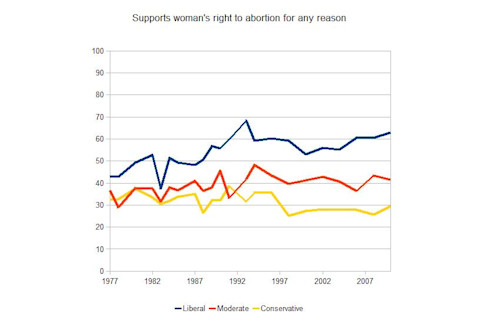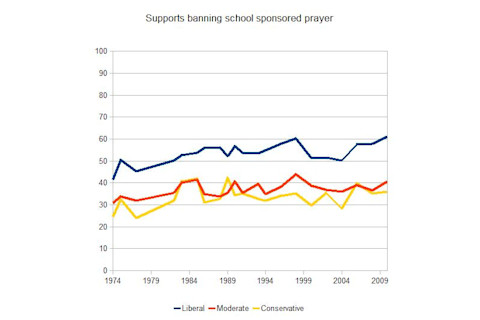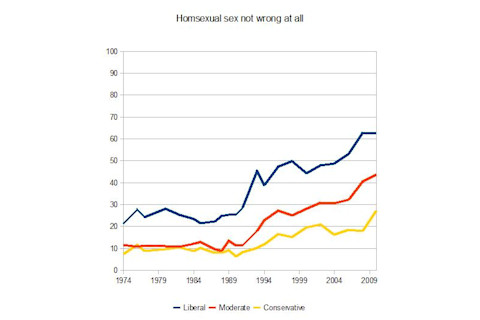The assertion in the title seems almost trivial in an impressionistic sense. There really wasn't a strong distinction on cultural issues between Gerald Ford and Jimmy Carter in 1976. By the 1980s there definitely was a gap between George H. W. Bush and Michael Dukakis. And that chasm got wider as the years went on. I thought of this when reading this entry in Wikipedia on Jonathan Krohn, a teenager who wrote a book titled Define Conservatism. The entry in Wikipedia states:
The book outlines four fundamental principles of conservative thought: support for the United States Constitution, opposition to abortion, less government, and more personal responsibility. Krohn went on to apply the principles to current events and define whether specifically cited actions violated those principles...The book was dedicated to Ronald Reagan, William F. Buckley, Jr. and Barry Goldwater, whom Krohn describes as his political heroes, along with South Carolina Senator Jim DeMint.
What raised my eyebrows here is that Barry Goldwater did not oppose abortion rights. In fact, his wife, daughter and granddaughter have been involved in Planned Parenthood. If opposition to abortion is a key definition for what conservatism is, the reality is that conservatism didn't exist before the 1970s, when that issue became polarized along ideological lines. But that's impression. What do the data say? For that, I looked at the General Social Survey. I divided the data set into liberal, moderate, and conservative. And, I tracked all the years from 1970s down to the present. The graph below shows the trend for abortion.

While conservatives have become moderately more opposed to abortion rights, liberals have become much more supportive. I assume this is what you'd expect if one operated under a model of greater polarization. So I wanted to see if this held for other "culture wars" policy controversies. So I looked at the variable which tracked opposition to the banning of school prayer.

Here you see a different trend. All the groups have been moving in the same direction, toward greater support of the Supreme Court decision banning school sponsored prayer, though the initial divisions remain. Finally, let's look at the proportion of the population which agrees with the proposition that "homosexual sex is not wrong at all."

Now you see that the gap is widening, but the chasm is due to the different rates of change of the opinions. All groups have exhibited increases in terms of assenting to the position that homosexual sex is not wrong, but conservatives much more slowly than liberals. From these data all I can say is that we should be very careful about broad generalizations about the trends in the American "culture wars.Note: You can see the original data here.













